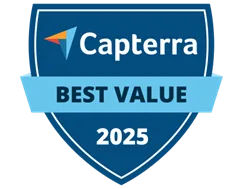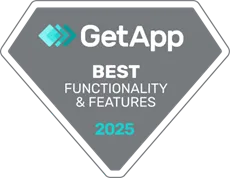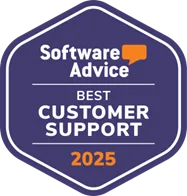Article by: Carl Diesing, Managing Director – Carl co-founded DNL OmniMedia
Marketing for an event is a challenge. You have to compete with the distractions of daily life, other commitments, and even other philanthropic efforts for the attention of your supporters. But when done correctly, events inspire connection, deepen engagement, and remind supporters why they love what you do.
Better fundraising events, whether they’re nationwide virtual events or intimate, in-person ones, demand better marketing strategies. This guide will explore three personalized and strategic ways to enhance your nonprofit event marketing efforts.
Budget Time and Resources for Market Research
When your team is building your event budget, include a line item and time in the schedule for market research. This is the process of gathering and analyzing data about customers (or event attendees) to determine their needs and preferences. You’ll combine primary information (from your supporters) and secondary information (from external sources) into valuable marketing insights.
While your nonprofit marketing team may already do this as part of their general efforts, event-specific market research can be especially effective because it sets your event up for success by including the preferences of your target audience from the outset.
Some of the ways that market research can strengthen your overall event marketing strategy include:
- Reducing financial risk. The goal of any event is to provide a return on investment (ROI). By knowing ahead of time what your supporters and event attendees want from the occasion, you can provide an experience that exceeds their expectations and increases your potential ROI.
- Strengthen your marketing strategies. As you collect primary data from your supporters in focus groups or surveys, you’ll be able to determine your most effective outreach methods. For example, supporters might prefer online communication via email or social media, or printed and personalized invitations. Understanding their preferences, as well as which techniques get their attention best, will only improve your outcomes. Plus, your marketing team can use this information in future campaigns and events.
- Improve supporter experience. When the needs and interests of your supporters are included from the start, your event has a higher chance of meeting your goals. Whether that’s a membership drive, a fundraising campaign, or an advocacy and awareness push, your event will be more successful when co-created with the interests of your community in mind.
Market research supports the success of your nonprofit’s event and the work of your marketing team. Budgeting for it ahead of time and building it into your timeline for event development will make promoting your event easier and more effective than ever.
Create Personas and Target Your Outreach
The information you’ve collected about your supporters, from their preferred methods of communication to the programs and causes that engage them most deeply, can be used to help your event marketing efforts through building personas and segmentation. These two processes help you personalize your outreach without drafting individual invitations for every attendee.
A persona is a tool that your team can create as a stand-in for individuals who are interested in your nonprofit. It enables you to think about how your marketing and outreach efforts are received by a real person with interests, a career, and competing priorities. Here are two example personas for an ocean preservation nonprofit:
- Persona 1: Michelle. Michelle is a woman in her early thirties. She is married, has no children, and has a full-time job. She frequently engages with your nonprofit on social media on posts related to ocean preservation, contributes a quarterly recurring online donation, and doesn’t respond to direct mail.
- Persona 2: David. David is a man in his late sixties. He is married with two adult children, has a full-time job, and has a very limited online footprint. He sends a check at the end of every year, earmarked for rehabilitating aquatic animals. He does not read emails, visit your website, or follow your social media accounts.
These two ‘people’ represent larger groups of your community of supporters, and you can tailor marketing efforts to reach these types of individuals. Once you’ve created personas that represent common archetypes of supporters, you can segment your donors by any number of variables and target your outreach to them based on those segments.
An example of how this segmentation can be incorporated into your event marketing and fundraising strategy is to offer different messages through different media. To reach supporters like David, send a physical invitation that highlights how the upcoming event supports aquatic wildlife rehabilitation. To engage the Michelle’s of your community, you could purchase social media advertisement space on her preferred platforms and send email invitations to events that support her love for conservation.
This marketing strategy improves the efficacy of your outreach and prevents wasted effort, but it does require up-to-date and actionable information. Best practices for data management include regularly reviewing and cleaning outdated or inaccurate details to ensure that you have the information you need.
Invest in the Right Technology for Your Organization
No matter what type of event you’re hosting or your organization’s mission, your nonprofit needs technology that serves its needs. When planning your event and building your marketing strategy, consider what your nonprofit will need before, during, and after the event.
Before and After the Event
In the weeks and months leading up to your event, your nonprofit will need ways to reach out to supporters wherever they are, as well as a central source of information. You can think of your marketing as a wheel with spokes. In this analogy, each spoke of the wheel represents a different outreach strategy—LinkedIn, Instagram, email newsletters, direct mail, phone calls—and the hub of the wheel is your central source.
In the digital age, that hub is likely to be your nonprofit’s website. Your site should inspire meaningful connections while providing clear information and ways to get involved. Ensure your website is functional, informational, accessible, and engaging. If you need ideas, look at other nonprofit websites.
Then, when you know which ‘spokes’ will be most effective for your event marketing strategy, invest in technology that makes using those spokes easier. These investments might include social media scheduling options, donor management software that handles email personalization, or a direct mail service.
The same technology that powered your pre-event marketing strategy will allow you to follow up more effectively after the fact. Send thank-you notes, email reminders, and further opportunities for engagement through the channels that proved to be most effective.
During the Event
Your marketing efforts don’t end when your event kicks off. Once you’ve gotten your supporters into the room, whether in an in-person ballroom or a virtual conference room, your team has to market your programs, progress, and sponsors.
Technology makes it easier than ever to get your audience’s attention while participating in your event. Some options for elevating your event through tech-enabled investments include:
- Onsite badge printing, where you can highlight the logos of your nonprofit, any partners, and your sponsors
- QR codes that make online donations easy and convenient
- Dynamic slideshows and videos of the beneficiaries of your programming efforts
When done right, technology can enhance your event team’s efforts and increase accessibility for attendees.
Better marketing can improve your event’s return on investment and return on experience, strengthening your connection with your supporters and encouraging them to return again and again. Smarter marketing outreach built on your supporters’ personal connection to your mission will encourage them to engage more deeply with your nonprofit.
 Carl Diesing, Managing Director – Carl co-founded DNL OmniMedia in 2006 and has grown the team to accommodate clients with ongoing web development projects. Together DNL OmniMedia has worked with over 100 organizations to assist them with accomplishing their online goals. As Managing Director of DNL OmniMedia, Carl works with nonprofits and their technology to foster fundraising, create awareness, cure disease, and solve social issues. Carl lives in the Hudson Valley with his wife Sarah and their two children Charlie and Evelyn.
Carl Diesing, Managing Director – Carl co-founded DNL OmniMedia in 2006 and has grown the team to accommodate clients with ongoing web development projects. Together DNL OmniMedia has worked with over 100 organizations to assist them with accomplishing their online goals. As Managing Director of DNL OmniMedia, Carl works with nonprofits and their technology to foster fundraising, create awareness, cure disease, and solve social issues. Carl lives in the Hudson Valley with his wife Sarah and their two children Charlie and Evelyn.



